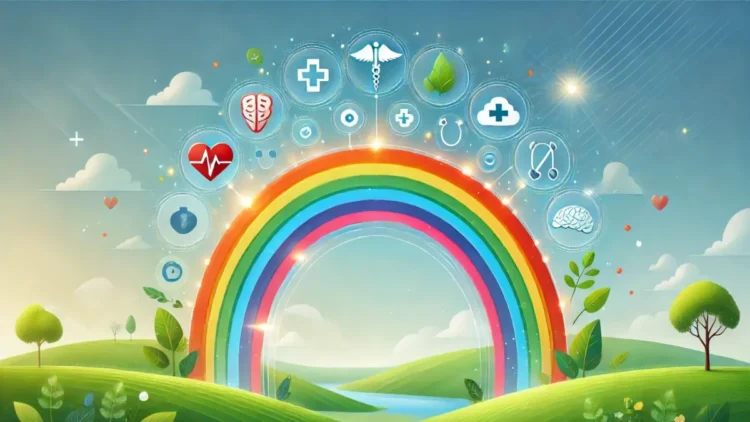The Wacky Ways Colors Mess with Your Health
Did you know the colors around you are doing more than making your Instagram feed pop? Colors can influence your mood, health, and even how much you eat! From ancient therapies to modern healthcare design, let’s take a vibrant journey into the world of color psychology and its surprising effects on your mind and body.
Seeing Red: The Energizer Color
Red isn’t just for Valentine’s Day hearts and stop signs—it’s a color with serious physiological power. Studies show that red can:
-
Increase heart rate and blood pressure (perfect for a workout playlist cover but maybe not your meditation app).
-
Stimulate appetite, which is why fast-food giants like McDonald’s use red in their branding.
But too much red can backfire. It’s also associated with anger—hence “seeing red” when you’re mad. So, maybe skip the red walls in your Zen den unless you’re going for a “boxing gym chic” vibe.
Feeling Blue: Calm, Cool, and Collected
If red gets your blood pumping, blue slows things down. Often called the color of tranquility, blue can:
-
Lower stress levels.
-
Reduce heart rate and even blood pressure.
This is why blue dominates healthcare uniforms and corporate logos—it’s all about building trust and calmness. But beware of the blues in winter; too much exposure to this color without sunlight can amplify feelings of melancholy or even trigger seasonal affective disorder (SAD).
Going Green: Nature’s Relaxation Button
There’s a reason we feel so good after a walk in the park. Green, the color of nature, is tied to relaxation, balance, and harmony.
-
Hospitals use green in-patient rooms to reduce anxiety and promote recovery.
-
Green packaging on food products signals health, nudging us toward better choices.
Fun fact: People who work in green offices report higher job satisfaction. So, if your workspace feels more grey than green, maybe add a plant—or ten.
Yellow: Sunshine in Color Form
Yellow is like that overly cheerful friend who never seems to have a bad day. It’s associated with happiness, optimism, and creativity.
-
A yellow room can boost your mood, but too much yellow. It might irritate you (especially if you’re already hangry).
-
Babies, for some reason, cry more in yellow rooms. Perhaps they find it too stimulating or are already unimpressed by their surroundings.
Colors and Your Eating Habits: What’s on Your Plate?
Ever wonder why junk food packaging is often red and yellow? It’s because these colors stimulate appetite and grab your attention. But the color of your plate matters too!
-
Contrasting colors: If your food stands out against your plate, you’ll likely eat less. So, white rice on a white plate? Dangerous combo.
-
Green plates: These can subtly encourage healthier eating habits, aligning with the “green means good” messaging.
If you’re on a diet, consider eating off smaller blue plates. Blue tends to suppress appetite—unless you’re eating blueberries, in which case, all bets are off.
Colors in Healthcare Design: More Than Aesthetic
Healthcare spaces aren’t just painted beige to bore you; there’s a method to the madness. Designers use color psychology to influence patient outcomes:
-
Soft greens and blues: Reduce anxiety and create a sense of calm.
-
Bright warm tones: Used in pediatric wards to make environments feel friendlier.
Even the scrubs healthcare workers wear is carefully chosen. Blues and greens not only soothe patients but also reduce eye strain for surgeons working under bright lights.
The Dark Side of Color Psychology
Not all colors are created equal when it comes to health. Overexposure to certain hues can have unintended consequences:
-
Grey and beige: Too much can feel drab and depressing, particularly in areas with low natural light.
-
Overly bright colors: Stimulating colors like neon green or bright pink might be exciting but can feel overwhelming in the wrong settings.
Balance, as always, is key.
The Final Palette: Painting a Healthier Life
Colors influence how we feel, how we eat, and even how we heal. Whether it’s the green of nature calming your mind, the blue of your office boosting your focus, or the red of your plate making you reach for seconds, understanding color psychology can help you make healthier choices in life.
So, take a look around. Are you using colors to their full potential—or is it time to repaint your world?


























